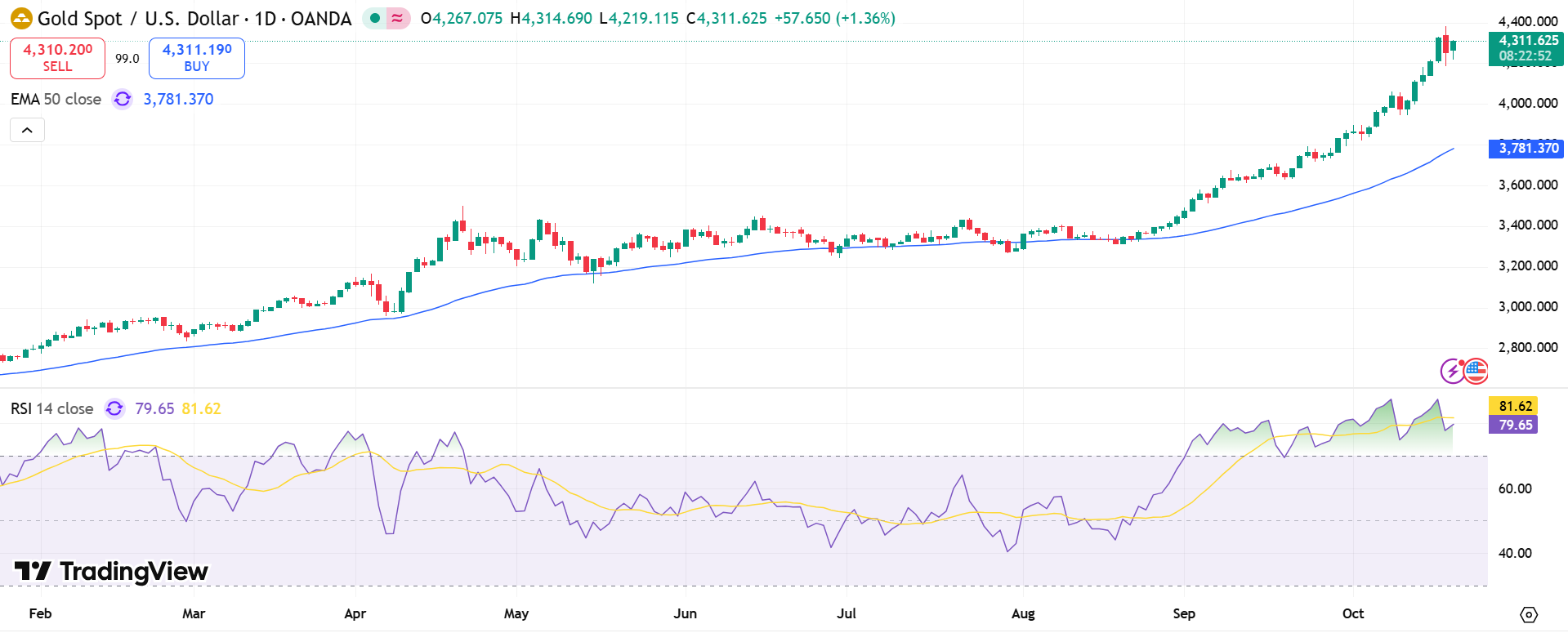Gold prices rebounded Monday, trimming last week’s sharp losses as investors assessed renewed optimism in U.S.–China trade talks and lingering geopolitical tensions. At 08:20 ET (12:20 GMT), spot gold rose 0.7% to $4,280.95 per ounce, while December futures advanced 2% to $4,297.24.
The recovery followed a brief selloff last week, when gold fell from record highs of $4,379.44/oz, driven by profit-taking and easing risk sentiment. Markets took comfort in U.S. President Donald Trump’s comments suggesting tariffs on China were “not sustainable” and that talks with President Xi Jinping would resume in South Korea within two weeks.
Treasury Secretary Scott Bessent also confirmed additional meetings with Chinese officials this week, signaling continued diplomatic engagement. Those reassurances sparked a rally in equities, tempering demand for traditional safe havens like gold.
Still, traders remain cautious. The ongoing U.S. government shutdown and Federal Reserve rate-cut speculation continue to provide structural support for bullion.
Key takeaways:
- Spot gold up 0.7%; futures gain 2%.
- U.S.–China trade optimism boosts equities.
- Shutdown and Fed policy uncertainty keep gold underpinned.
Geopolitical Strains Sustain Haven Demand
Beyond trade policy, investors continue to monitor rising geopolitical tensions that reinforce gold’s appeal as a hedge. Renewed Israel–Hamas friction over the weekend tested the strength of a fragile ceasefire, though Israel later confirmed that aid deliveries to Gaza would resume Monday.
In Europe, diplomatic focus shifted to Washington’s efforts to broker peace in Ukraine. Reports surfaced that President Trump met Ukrainian leader Volodymyr Zelensky, urging territorial concessions to Moscow while signaling limits on future U.S. military aid.
This environment of persistent instability—spanning the Middle East, Eastern Europe, and domestic fiscal politics—has kept gold in demand. According to RBC Capital Markets, bullion’s strength stems not just from macroeconomic drivers but from “compounding uncertainty” across markets.
Analysts Cite Broader Uncertainty as Catalyst

RBC strategist Christopher Louney said multiple political and economic factors—ranging from inflation risks and fiscal strain to central bank credibility—have contributed to an “unbroken sense of investor unease.”
These dynamics have pushed gold allocations higher, reinforcing its role as a safe haven and portfolio diversifier. The firm expects continued volatility to sustain gold’s appeal through the next quarter.
Elsewhere, silver climbed 1.5% to $50.83/oz, and platinum rose 0.3% to $1,624.45/oz. Among industrial metals, copper prices strengthened after China’s third-quarter GDP beat expectations, even as growth slowed to its weakest pace in a year.


